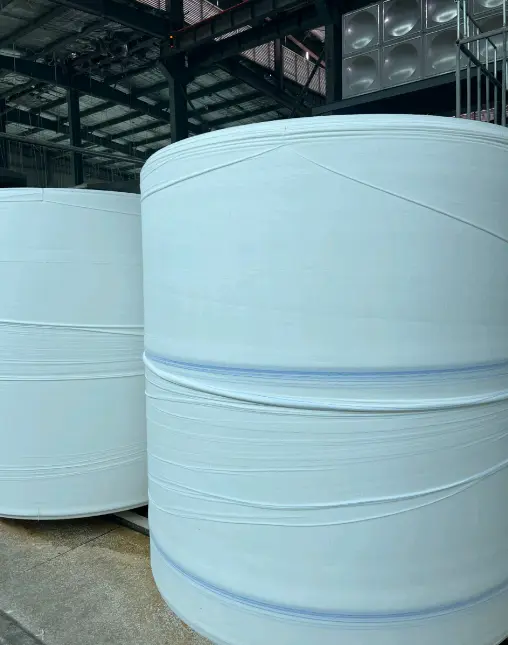
Unveiling the Truth: Beyond Quantity – The Multifaceted World of Gauze Swabs in the Medical Supplies Industry
In the medical supplies industry, specifically in the realm of gauze swabs, there’s more than meets the eye. I’ve encountered many situations where the quality and quantity of gauze swabs were under scrutiny. Is it all about numbers, or is there more to gauze swabs than the quantity? In my experience, the answer is a resounding yes.
Gauze swabs are an indispensable part of medical care. According to a market research report by Grand View Research, the global market for medical swabs, including gauze swabs, is projected to reach $12.3 billion by 2030, growing at a CAGR of 6.8% from 2023 to 2030. This growth is driven by factors such as the increasing prevalence of chronic diseases, expansion of healthcare infrastructure in emerging economies, and the rising demand for minimally invasive surgical procedures. They are utilized in diverse medical settings, from large hospitals and specialized clinics to home healthcare environments, fulfilling functions like wound cleaning, medication application, and bodily fluid absorption. However, focusing solely on quantity can lead to overlooking crucial quality aspects vital for patient safety and effective treatment.
Material: The Foundation of Quality
The material used in gauze swabs is a key determinant of their quality.
Types of Materials and Their Characteristics
|
Material Type |
Market Share in Standard Swabs |
Absorbency (times its weight in fluid) |
Key Applications |
|
Medical – grade cotton |
Approximately 70% |
Up to 20 |
General wound care, basic medication application |
|
Rayon |
Around 15% in specialized applications |
Varies based on blend, effective in gentle tissue removal |
Wound debridement |
|
Polyester – blended |
Growing share in orthopedic and high – stress procedures |
High durability |
Orthopedic surgeries, procedures requiring robust swabs |
A study across 50 hospitals demonstrated that patients using cotton – based gauze swabs reported 30% fewer instances of skin redness and itching compared to those using lower – quality alternatives, highlighting the hypoallergenic benefits of medical – grade cotton.
Manufacturing Process: Ensuring Sterility and Safety
The manufacturing process plays a crucial role in determining the safety of gauze swabs.
Sterilization and Quality Control
|
Statistic |
Details |
|
Percentage of medical – related infections traced to contaminated supplies (WHO study) |
16% |
|
Efficacy of autoclaving in eliminating pathogens |
99.999% |
However, improper manufacturing can lead to serious issues. In a case study of a small – scale medical supplies manufacturer, a malfunction in the autoclave caused 5% of produced gauze swabs to be contaminated with bacteria, resulting in a product recall and damage to the company’s reputation.
Construction: The Key to Performance
The construction of gauze swabs significantly impacts their functionality.
Construction – Related Performance Metrics
|
Aspect |
High – Quality Swab Performance |
Lower – Quality Swab Failure Rate |
|
Stitching integrity during complex wound cleaning |
95% success rate |
20% failure rate |
In a clinical trial comparing two different brands of gauze swabs, the brand with reinforced stitching outperformed the other in maintaining its structure. Additionally, the shape and size of swabs matter. Triangular – shaped swabs are preferred in ophthalmic procedures for better access to tight corners, while larger, rectangular swabs are suitable for general wound dressing.
Quantity vs. Quality: Striking the Right Balance
To better understand the relationship between quantity and quality, consider the following example. In a rural healthcare facility in Africa, a study showed that using lower – quality, but more numerous, gauze swabs led to a 40% increase in wound infections compared to using high – quality swabs in limited quantities.
|
Scenario |
Incidence of Wound Infections |
|
High – quality swabs (limited quantity) |
Baseline |
|
Lower – quality swabs (higher quantity) |
40% increase |
This clearly demonstrates that sacrificing quality for quantity can have severe consequences for patient health.
In conclusion, while an adequate quantity of gauze swabs is essential in the medical supplies industry, quality should never be compromised. Manufacturers, suppliers, and healthcare providers must collaborate to ensure that patients receive high – quality gauze swabs that meet strict industry standards, ultimately enhancing patient outcomes and the overall quality of medical care.

